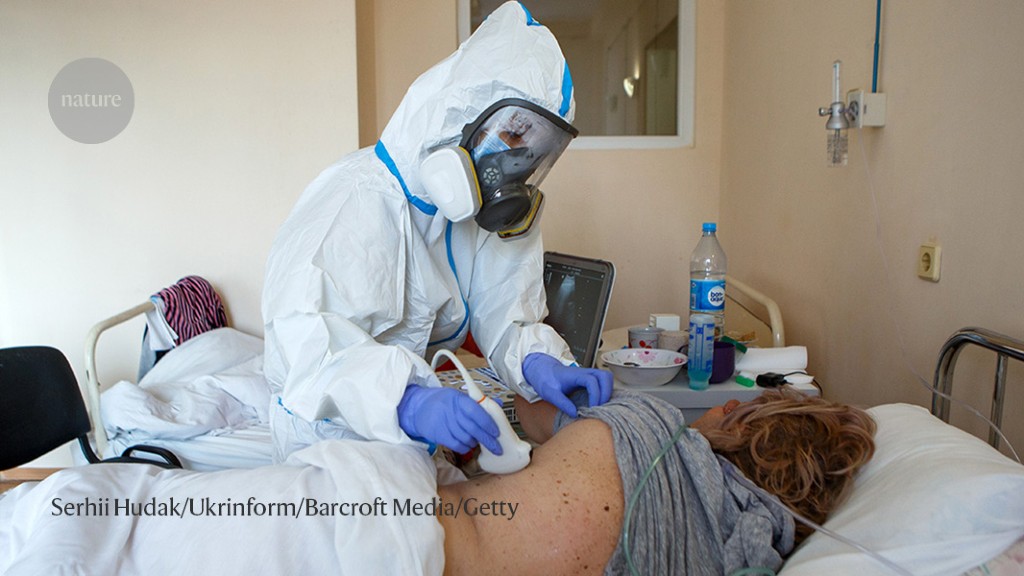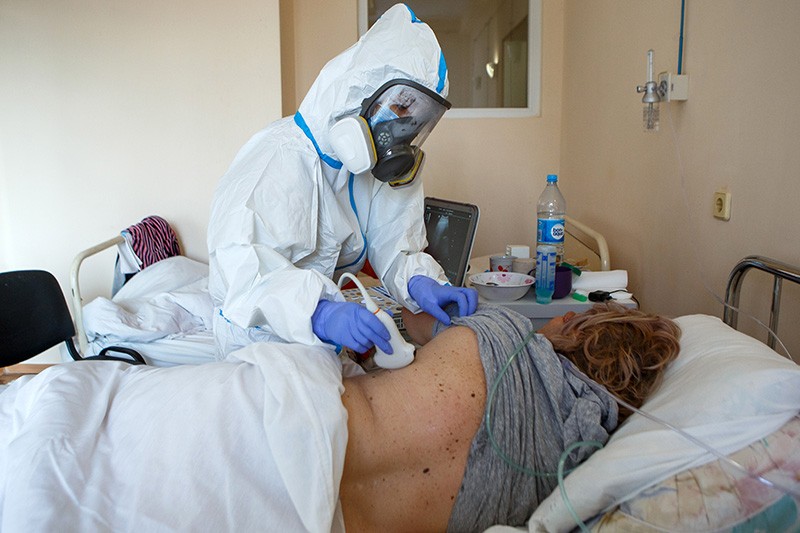Early indications from South Africa and the United Kingdom signal that the fast-spreading Omicron variant of the coronavirus SARS-CoV-2 is less dangerous than its predecessor Delta. Now, a series of laboratory studies offers a tantalizing explanation for the difference: Omicron does not infect cells deep in the lung as readily as it does those in the upper airways.
“It’s a very attractive observation that might explain what we see in patients,” says Melanie Ott, a virologist at the Gladstone Institute of Virology in San Francisco, California, who was not involved in the research. But she adds that Omicron’s hyper-transmissibility means that hospitals are filling quickly — despite any decrease in the severity of the disease it causes.
Authorities in South Africa announced on 30 December that the country had passed its Omicron peak without a major spike in deaths. And a 31 December UK government report said that people in England who were infected with Omicron were about half as likely to require hospitalization or emergency care as were those infected with Delta.
But the number of people who have gained immune protection against COVID-19 through vaccination, infection or both has grown over time, making it difficult to determine whether Omicron intrinsically causes milder disease than earlier variants. For answers, researchers have turned to animals and to cells in laboratory dishes.
Michael Diamond, a virologist at Washington University in St. Louis, Missouri, and his colleagues infected hamsters and mice with Omicron and other variants to track disease progression. The differences were staggering: after a few days, the concentration of virus in the lungs of animals infected with Omicron was at least ten times lower than that in rodents infected with other variants1. Other teams have also noted that compared with previous variants, Omicron is found at reduced levels in lung tissue2,3.
Diamond says he was especially shocked to see that the Omicron-infected animals nearly maintained their body weight, whereas the others quickly lost weight — a sign that their infections were causing severe disease. “Every strain of SARS-CoV-2 has infected hamsters very easily, to high levels,” he says, “and it’s clear that this one is different for hamsters.” The lungs are where the coronavirus does much of its damage, and lung infection can set off an inflammatory immune response that ravages infected and uninfected cells alike, leading to tissue scarring and oxygen deprivation. Fewer infected lung cells could mean milder illness.
Another group found that Omicron is much less successful than previous variants at infecting lung cells and miniature lung models called organoids4. These experiments also identified a plausible player in the difference: a protein called TMPRSS2, which protrudes from the surfaces of many cells in the lungs and other organs, but is notably absent from the surfaces of most nose and throat cells.
Previous variants have exploited this protein to infect cells, but the researchers noticed that Omicron doesn’t bind to TMPRSS2 so well. Instead, it tends to enter cells when it is ingested by them5,6.
Upper airway preferred
Difficulty entering lung cells could help to explain why Omicron does better in the upper airways than in the lungs, says Ravindra Gupta, a virologist at the University of Cambridge, UK, who co-authored one of the TMPRSS2 studies4. This theory could also explain why, by some estimates, Omicron is nearly as transmissible as measles, which is the benchmark for high transmissibility, says Diamond. If the variant lingers in the upper airways, viral particles might find it easy to hitch a ride on material expelled from the nose and mouth, allowing the virus to find new hosts, says Gupta. Other data provide direct evidence that Omicron replicates more readily in the upper airways than in the lungs2,5.
The latest results could mean that “the virus establishes a very local infection in the upper airways and has less chance to go and wreak havoc in the lungs”, Ott says. That would be welcome news — but a host’s immune response plays an important part in disease severity, and scientists need more clinical data if they are to understand how Omicron’s basic biology influences its disease progression in humans.
Omicron’s course of infection could also have implications for children, says Audrey John, a specialist in paediatric infectious disease at the Children’s Hospital of Philadelphia in Pennsylvania. Young children have relatively small nasal passages, and babies breathe only through their noses. Such factors can make upper respiratory conditions more serious for children than for adults, John says. But she adds that she has not seen data suggesting an uptick in the numbers of young children hospitalized for croup and other conditions that could indicate a severe infection of the upper respiratory tract.
Although there is still much to learn about the new variant, Gupta says that fears raised in late November by the multitude of mutations in Omicron’s genome have not been completely borne out. He says the initial alarm offers a cautionary tale: it’s difficult to predict how a virus will infect organisms from its genetic sequence alone.






More News
Daily briefing: Carrion crows have counting skills seen only in people
Researcher parents are paying a high price for conference travel — here’s how to fix it
Asymmetric hydrogenation of ketimines with minimally different alkyl groups – Nature